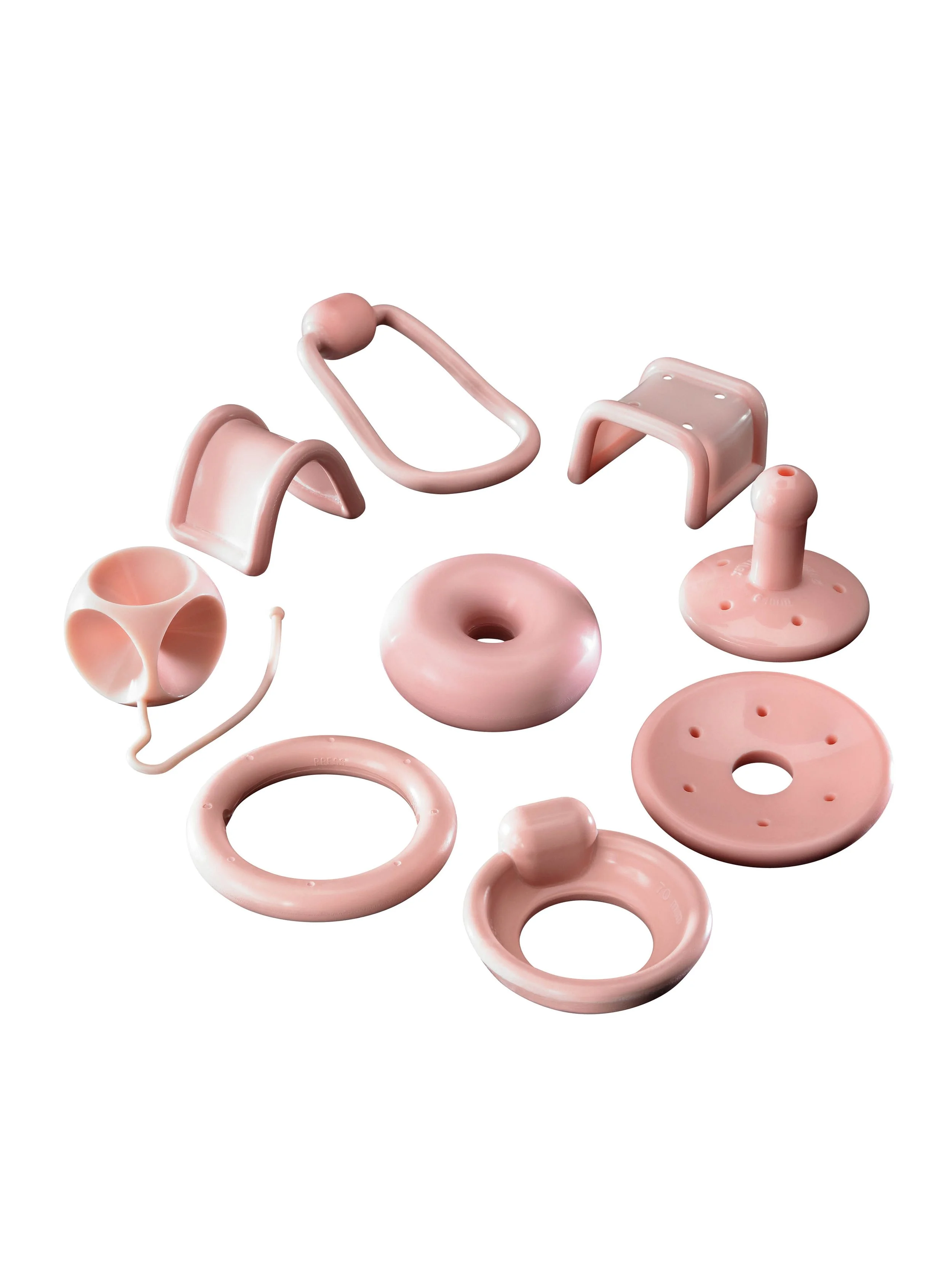It’s a bird, it’s a plane, it’s a ….pessary?
Guessing for most of you out there you’re probably wondering…what exactly is a pessary and what is its purpose?
In a short and sweet sense, a pessary is a support device that is inserted into the vagina to help support pelvic organ prolapse and/or symptoms of stress urinary incontinence. It has sometimes been said, “they are like a sports bra for your organs.”
So, what is pelvic organ prolapse and what is stress urinary incontinence?
Pelvic organ prolapse, in precise terms, is an anatomical downward shift of the pelvic organs. Pelvic organs that can shift in the female body can include the bladder, rectum, uterus, vaginal vault (can occur in some cases after a hysterectomy), and/or the intestines (more rare). One or several organs can be affected.
Having a pelvic organ prolapse is very common! We are all living life and every day there are different stressors on our anatomy, ligaments, and tissue support system. The big question is: has this tissue issue become symptomatic and is it affecting your ability to participate in activity and life? In other words, has this tissue shift in your pelvis started to become bothersome?
Symptoms of pelvic organ prolapse can widely vary and within your own body can change throughout your day or week depending on your positioning, activity levels, hormonal shifts, etc.
There are many urinary symptoms that can arise from having pelvic organ prolapse (one of which is leaking pee, which I will go into more detail soon!)
Urinary symptoms can include (and you could have some, or many):
hesitancy to begin a stream
slow stream
intermittent stream (it stops and starts)
straining to void
nocturia (up at night to pee)
over-active bladder
feeling like you didn’t fully empty your bladder after peeing
dribbling or leaking right after you already peed
Bowel symptoms can include (and again you could have some of these symptoms, none of these, or all of them):
constipation
splinting (having to put pressure on your perineum or vaginal wall to effectively poop)
straining to poop
sense of rectal blockage
bowel urgency (having to poop right away and having little to no control over it)
soiling (some poop left on underwear after going)
feeling like you didn’t get everything out after you pooped
Pelvic organ prolapse could also just make you feel really heavy and achy in your pelvis. You could feel like you’re sitting on a golf ball, or maybe you’re experiencing generalized pelvic pain or even lower back pain.
Stress urinary incontinence is leakage with increased intra-abdominal pressure (for example, think leaking with coughing, sneezing, jumping, laughing).
Again, many can have prolapse and experience no debilitating symptoms. Others may experience a wide range of the symptoms listed above.
So, back to those alien looking objects!
Pessaries can be a great option for many patients who are experiencing some or many of the symptoms listed above. They can be utilized for a patient at ANY AGE! They come in many different shapes and sizes. The purpose of different shapes and sizes is so they can be custom fit for the patient’s individual anatomy and needs. Sometimes a pessary needs a re-fit if you try it for a while and it’s not doing the job or it’s uncomfortable.
Some people use them for a longer duration (many years) or some individuals may use them for shorter durations (for example, during a sport or activity that causes an increase in their symptoms). Some pessaries are meant for the patient to be able to put in and remove on their own. Others may be left in for a longer period of time. Other instances where a pessary might be used for a shorter duration can include for symptom relief while waiting to have surgery, or, for example, in the postpartum period with increased tissue laxity from hormonal shifts. The important thing to remember is that everyone is different. Another important reminder is that a pessary is a puzzle piece of an individual’s entire treatment plan. It’s important to see a specialized pelvic floor Physical Therapist (PT) to work on all of the other aspects that can help you on your journey to have a healthy pelvic floor for life. Pelvic floor muscles are an integral part of supporting pelvic organ prolapse. You want to make sure your pelvic floor muscles are working well so the prolapse is supported from a musculoskeletal standpoint.
Pelvic floor physical therapists also make sure you have a healthy spine, abdominals, breath muscles, and hip muscles! When pooping or lifting larger objects you want to make sure you are not straining so you aren’t putting more pressure on your organs support system. Amongst other important daily life activities, a pelvic floor physical therapist will also want to know if you’re hydrating well, the mechanics of your lifting, and whether you’re using a foot stool when you poop. You will want to address all of your underlying factors causing or worsening your prolapse in addition to a pessary support. If you’re experiencing a lot of tightness in your pelvic floor muscles and associated pain, you would want to sort that out before getting fit for a pessary.
Did you know there are records on pessary use dating back to the Ancient Egyptians? There were many different methods used in those times for pelvic organ support, one of which was a pomegranate (NOT suggesting you insert a pomegranate into your vagina!!) These issues aren’t new—they have existed throughout the ages—we have just evolved new ways of treating them.
The specialists at Insight Pelvic Health are now doing customized pessary fitting. If you are experiencing symptoms and you want to investigate whether you are a candidate for a pessary fitting, please reach out today!

